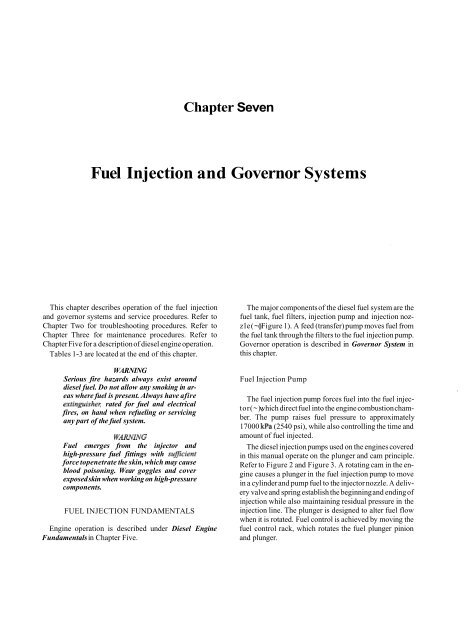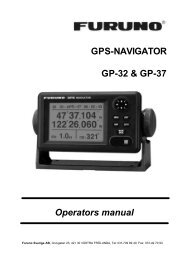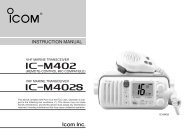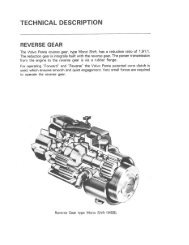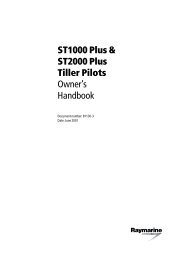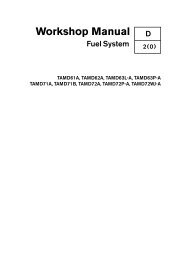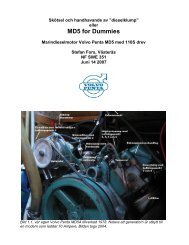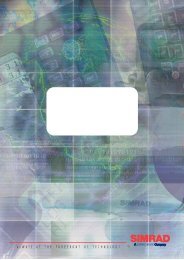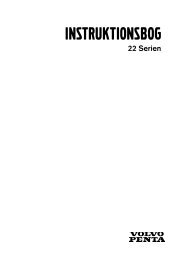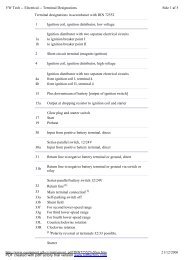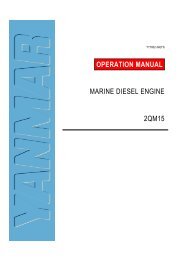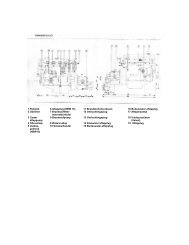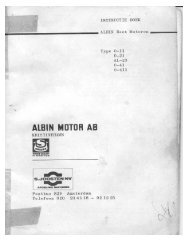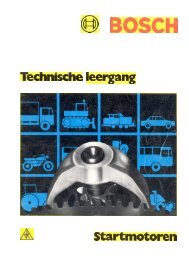Create successful ePaper yourself
Turn your PDF publications into a flip-book with our unique Google optimized e-Paper software.
Chapter Seven<br />
Fuel Injection and Governor Systems<br />
This chapter describes operation of the fuel injection<br />
and governor systems and service procedures. Refer to<br />
Chapter Two for troubleshooting procedures. Refer to<br />
Chapter Three for maintenance procedures. Refer to<br />
Chapter Five for a description of diesel engine operation.<br />
Tables 1-3 are located at the end of this chapter.<br />
WARNING<br />
Serious fire hazards always exist around<br />
diesel fuel. Do not allow any smoking in areas<br />
where fuel is present. Always have afire<br />
extinguishel; rated for fuel and electrical<br />
fires, on hand when refueling or servicing<br />
any part of the fuel system.<br />
WARNING<br />
Fuel emerges from the injector and<br />
high-pressure fuel fittings with suficient<br />
force topenetrate the skin, which may cause<br />
blood poisoning. Wear goggles and cover<br />
exposed skin when working on high-pressure<br />
components.<br />
FUEL INJECTION FUNDAMENTALS<br />
Engine operation is described under Diesel Engine<br />
Fundamentals in Chapter Five.<br />
The major components of the diesel fuel system are the<br />
fuel tank, fuel filters, injection pump and injection nozzle(~)<br />
(Figure 1). A feed (transfer) pump moves fuel from<br />
the fuel tank through the filters to the fuel injection pump.<br />
Governor operation is described in Governor System in<br />
this chapter.<br />
Fuel Injection Pump<br />
The fuel injection pump forces fuel into the fuel injector(~),<br />
which direct fuel into the engine combustion chamber.<br />
The pump raises fuel pressure to approximately<br />
17000 kPa (2540 psi), while also controlling the time and<br />
amount of fuel injected.<br />
The diesel injection pumps used on the engines covered<br />
in this manual operate on the plunger and cam principle.<br />
Refer to Figure 2 and Figure 3. A rotating cam in the engine<br />
causes a plunger in the fuel injection pump to move<br />
in a cylinder and pump fuel to the injector nozzle. A delivery<br />
valve and spring establish the beginning and ending of<br />
injection while also maintaining residual pressure in the<br />
injection line. The plunger is designed to alter fuel flow<br />
when it is rotated. Fuel control is achieved by moving the<br />
fuel control rack, which rotates the fuel plunger pinion<br />
and plunger.


